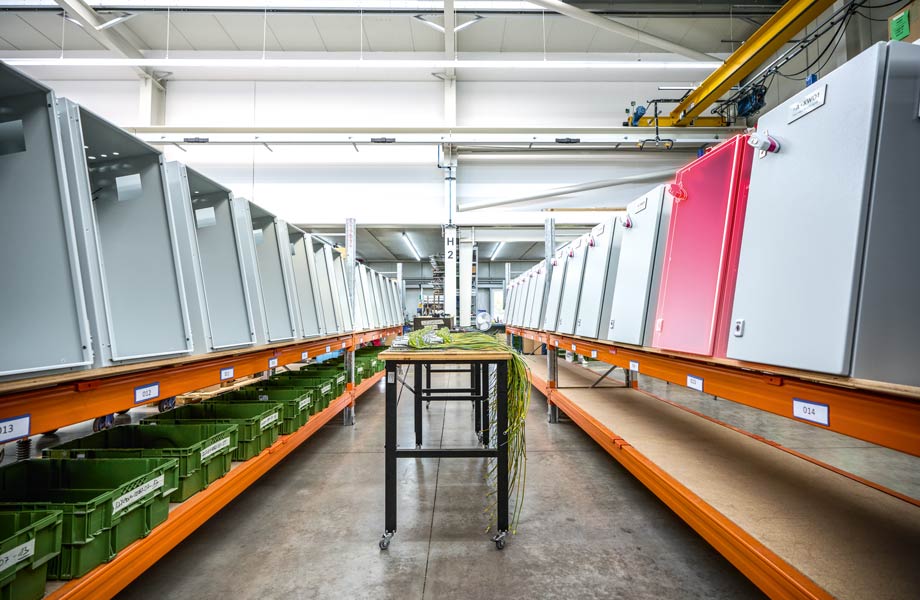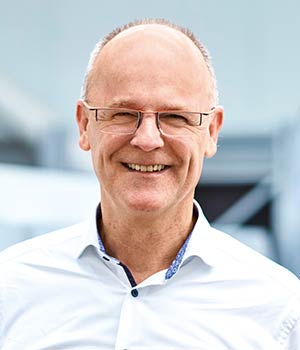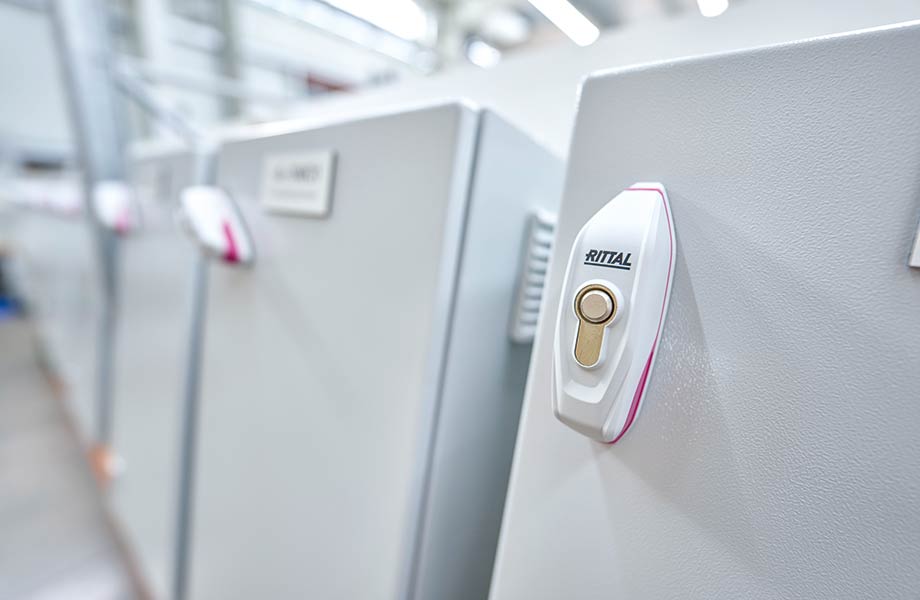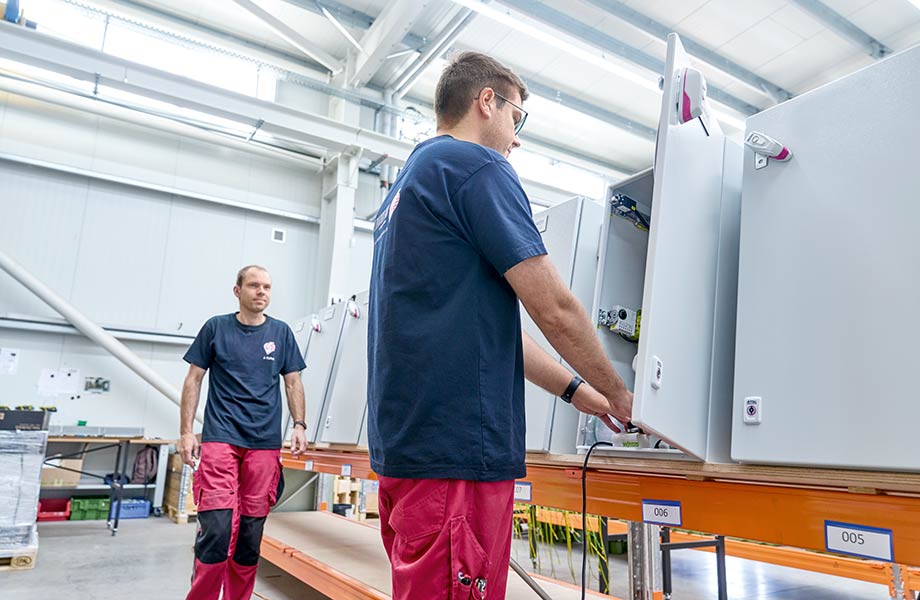Text Dr Jörg Lantzsch ––– Photography
The energy transition is in full swing, but one aspect that seldom receives much attention is the need to convert distribution grids. “The energy transition is taking place in distribution substations,” emphasises Ulrich Hempen, Vice President Business Unit Solutions at WAGO, who is responsible for the energy, building and industry sectors. His business unit develops solutions that make local grids smart. Why are smart local grids even necessary, though? A variety of decentralised energy sources – from wind turbines to rooftop solar panels on houses – feed energy into the grids, with the amounts fluctuating depending on how windy or sunny it is. Combined with similarly erratic energy consumption, this leads to fluctuations in mains frequency and voltage. Such fluctuations must not exceed a few volts or millihertz, though. Otherwise, the transformer converting the medium voltage to low voltage for consumers will switch off, resulting in a power outage.
WAGO supplies its solutions for smart distribution substations as complete systems. These consist of compact telecontrollers from the PFC200 series that can be equipped with the necessary test terminal blocks for the individual low-voltage outputs on a modular basis. The measured data is transmitted to the distribution grid operator’s grid control technology. WAGO controllers can also handle the IEC 60870-5-104 protocol used for this purpose. WAGO has now commissioned a large German local grid operator to develop and produce a ready-to-install system that can take care of all measuring technology and data transmission aspects.
One particular challenge is the sheer number of distribution substations needing to be converted. Such large quantities call for strong partners, a high level of standardisation and series production. WAGO has tasked Schaltanlagenbau GmbH H. Westermann with manufacturing the systems. “A switchgear manufacturer must be able to handle high-volume production,” says Heinz-Dieter Finke, Managing Partner of Schaltanlagenbau GmbH H. Westermann. Based in the northern German town of Minden, this company offers engineering and manufacturing services. The enclosures in which all system components are installed come from Rittal, as the project partners find AX compact enclosures measuring 400 x 800 x 300 mm ideal for this application.
AVAILABILITY IS VITAL
“For standard production, we purchase the enclosures complete with all the necessary cut-outs and holes direct from Rittal,” reveals Finke’s fellow Managing Partner, Uwe Friedrichs. This is the only way the medium-sized company can achieve the high production volumes. All the components, most of which are provided by WAGO, are fitted and wired on a mounting plate so that they can then all be installed in the enclosure together. The switchgear manufacturer has set up a separate series production operation for this project to supply WAGO with the complete systems quickly and reliably. It goes without saying that the delivery reliability of subcontractors is very important. “Rittal is exemplary in this regard. We are always able to order the enclosures as required to fit in with series production and they are delivered on time,” emphasises Friedrichs. Especially given the current supply chain problems, this is an invaluable advantage. Availability and the ability to deliver play a key role for the entire project. In Hempen’s view, another reason why WAGO specifications stipulate the use of Rittal enclosures is their long-term availability. “Previously, distribution grids were often required to use components that were available for up to 30 years. Even now, it must be ensured that spare parts can be supplied for a period of 15 to 20 years,” he says. Partners such as Rittal are needed for that kind of delivery performance. According to Hempen, the straightforward fitting out and well-known high quality of Rittal enclosures naturally also play their part.
FURTHER GRID DIGITALISATION REQUIRED
The kind of parameter measurement in distribution substations that WAGO systems offer is, however, just the first step on the way to intelligent distribution grids. The new Section 14a of Germany’s Energy Industry Act envisages a lower grid charge for customers who agree grid-oriented control of their consumption with the grid operator. This could mean, for example, that a charging centre only charges electric vehicles once other consumers are switched off or the wind picks up and the nearest wind turbine feeds more power into the grid. Further digitalisation of distribution substations is required for this purpose. In addition to the currently installed measurement of parameters, that means bidirectional power regulation at the level of the distribution grids. Ever more progress is thus being made with local energy system conversion, too.





